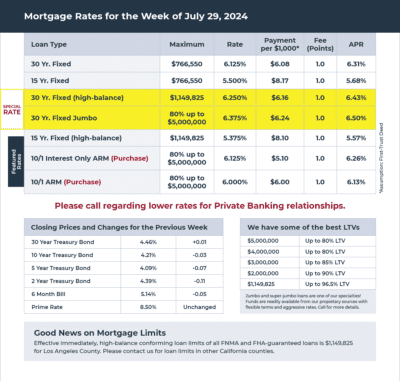Rates Remain Steady
The biggest economic release last week showed that inflation was in line with expectations, and the other data also had little impact on mortgage markets. As a result, rates ended last week nearly unchanged.
Core PCE Remains Above Fed Target
Fed officials keep a close eye on inflation, and the PCE price index is their favored indicator. In June, core PCE, which excludes food and energy to reduce short-term volatility, was up 2.6% from a year ago. This was the same annual rate of increase as last month and the lowest level since March 2021. While far below its recent peak, it stubbornly remains above the Fed’s target of 2.0%.
GDP Surges in Q2
Gross Domestic Product (GDP) is the broadest measure of economic activity. During the second quarter of 2024, U.S. GDP rose at an annualized rate of 2.8%, well above the consensus forecast of 2.0% and up from 1.4% during the first quarter. Strength was seen in consumer spending, government spending, and nonresidential investment. After letting inventories draw down during the first quarter, companies built them back up during the second quarter, also adding significantly to the overall growth rate. The inflation component of the report was lower than expected, offsetting the negative impact for mortgage markets of faster growth.
Housing Market Remains Tight
In the housing sector, sales of existing homes in June fell 5% from May to the lowest level since December. The median existing home price of $426,900 was up 4% from last year at this time, at a record high. However, part of this increase was due to a shift in sales to more expensive homes relative to ones at the lower end of the market. Inventory levels remain stuck near historic lows, standing at just a 4.1-month supply nationally, far below the 6-month supply typical in a balanced market. Looking at these figures from a different perspective, though, inventories were 23% higher than a year ago.

Mortgage Rates for the week of 7-29-2024
